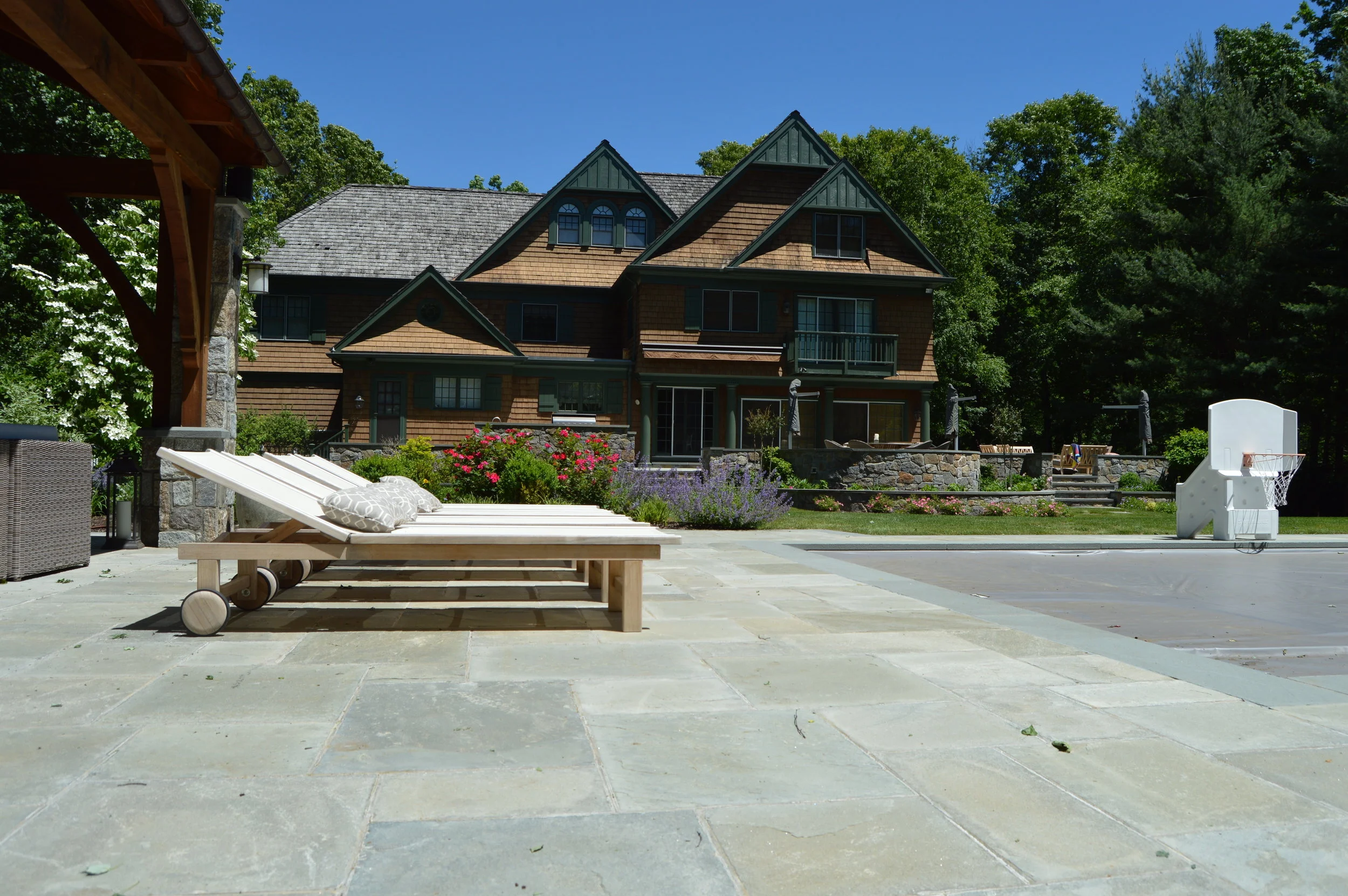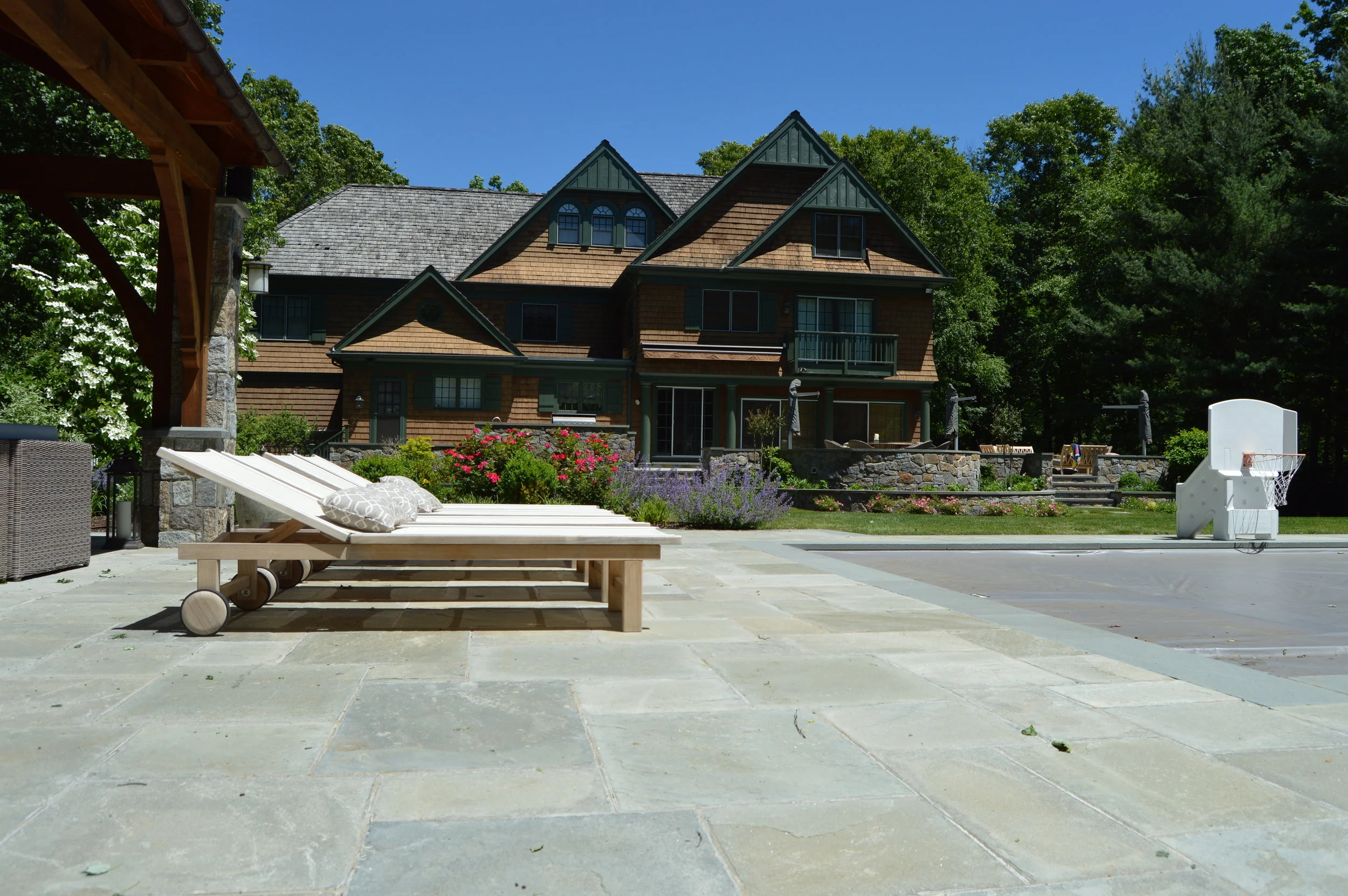If the next landscape project on your list is a patio installation, you’ll want to do some research on your options. And chances are, you’ll come across the debate of whether to use stamped concrete or concrete pavers for your new patio floor in Scarsdale, NY.
Stamped concrete is relatively new, while interlocking concrete pavers have been used to pave courtyards, streets, and walkways for centuries across the globe. Stamped concrete is poured to create a single continuous concrete surface, which is then textured and embossed to resemble brick, natural stone, tile, or wood. Concrete pavers, on the other hand, are manufactured from molds and interlocked to create more flexible surfaces. Each option brandishes its own arsenal of unique advantages and disadvantages. Consider the following qualities of stamped concrete and patio pavers to simplify your decision between the two:
Stamped Concrete: The Pros
Stamped concrete offers the potential for more ornate and spectacular designs because it can be finished with various distinctive textures and designs. The mobility of concrete enables contractors to hand-blend colors on site, and there is a near-endless array of colors (and embossed patterns) to choose from. Stamped concrete is an excellent hardscape material for projects that require detailed customization and the display of personalized artistic flair. It can be sealed to enhance its ability to hold its own when faced with harsh weather and substances like pool chemicals.
Related: HAVE A STAYCATION IN YOUR YORKTOWN, NY, BACKYARD WITH THESE PATIO INSTALLATION IDEAS
Stamped Concrete: The Cons
The initial cost of investing in stamped concrete can be relatively high. Unfortunately, this material tends to demand a large amount of maintenance as well, resulting in continued spending on labor or materials. Not only must stamped concrete be re-sealed every year, but it can crack easily under the ever-changing push and pull of freeze-thaw cycles. While there are measures that can be taken to counteract the cracking of a stamped concrete surface, they likely will interrupt the exquisite patterns etched into its surface. After many years, a stamped concrete surface may have faded under constant UV exposure, and finding matching concrete to patch an imperfection may become difficult. Surface designs can also be diminished by de-icing salts, which are necessary to maintain the safety of surfaces like driveways and walkways in winter.
Concrete Pavers: The Pros
When properly installed, concrete pavers generally crack at a far smaller frequency than stamped concrete. Although the initial cost of investing in concrete pavers may be similar to that of stamped concrete, there are far fewer costs involved in their maintenance over time. They are manufactured to bear impressive compressive strength and, when interlocked, create a flexible surface with the ability to yield to the natural ebb and flow of the earth and freeze-thaw cycles. As a result, they hardly ever require replacement or repair. Should a paver become damaged somehow, it can quickly be lifted and replaced without disturbing the rest of the paved surface. Concrete pavers are a worthy contender to the aesthetic prowess of stamped concrete, as pavers of various colors and finishes can be combined in captivating laying patterns to produce stunning surfaces.
Concrete Pavers: The Cons
Despite their numerous advantages over stamped concrete, pavers aren’t perfect. Without the use of a binding polymer, the jointing sand between pavers will need to be replenished every year. The lack of a binding polymer also opens joints up to being overtaken by weeds. Without the proper base preparation and installation, pavers can settle or move over time. Getting a professional landscape contractor in to do the job is, therefore, essential.
RELATED: INCORPORATE A HIDDEN PATIO IN YOUR LANDSCAPING IN BRIARCLIFF MANOR, NY


